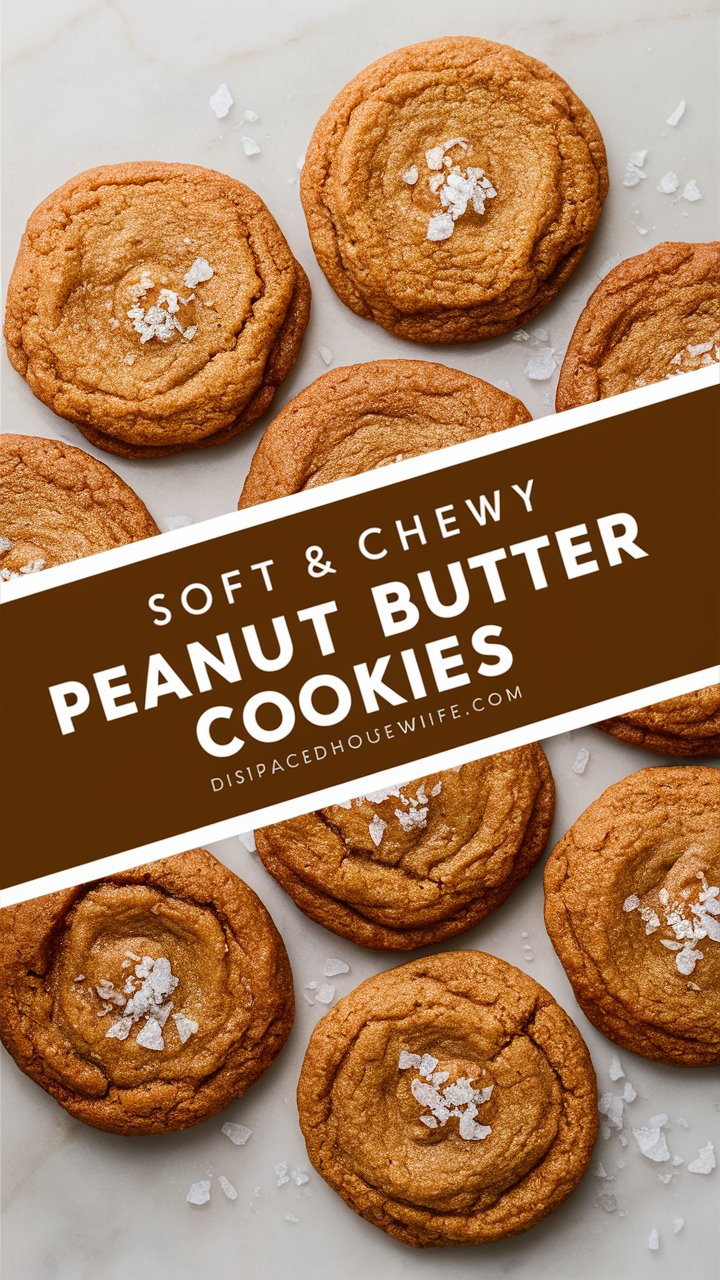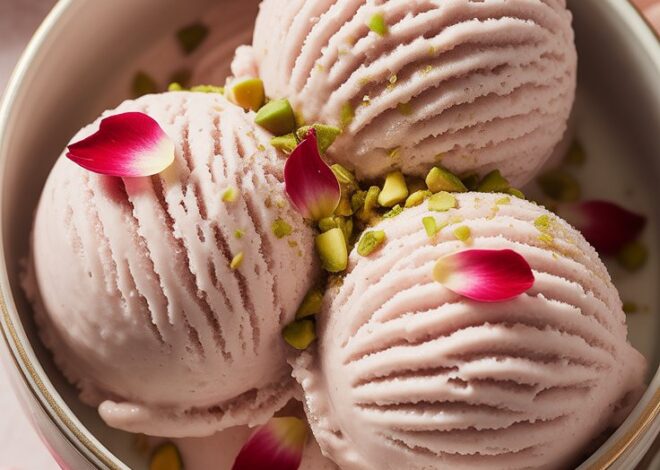
How to Make Thick and Chewy Peanut Butter Cookies From Scratch 2025
Few cookies evoke such warm feelings and nostalgic comfort as the classic peanut butter cookie. Its rich, nutty flavor combined with a tender yet chewy texture makes it a timeless favorite for home bakers and cookie lovers alike. But achieving the perfect thick and chewy peanut butter cookie isn’t always easy — the balance between softness and structure can be tricky.
This comprehensive guide will take you through every step to bake bakery-quality peanut butter cookies that are thick, soft in the center, and lightly crisp around the edges. You’ll learn not only a foolproof recipe but also the science behind each ingredient and baking technique. By the end, you’ll be equipped to make these irresistible cookies with confidence and even customize them to suit your tastes.
Understanding the Ingredients: Building Blocks for Thick and Chewy Cookies
To make outstanding peanut butter cookies, it’s important to understand the role of each ingredient and how they contribute to texture and flavor.
1. Peanut Butter: The Star Ingredient
- Type: Use creamy peanut butter for the smoothest dough and classic texture. Avoid natural peanut butter that separates oil as it can alter dough consistency unless you adjust fat content.
- Flavor: Peanut butter provides deep, nutty richness. You can experiment with crunchy peanut butter for extra texture.
2. Butter: Softness and Structure
- Unsalted butter is preferred for better control over saltiness.
- Butter’s fat helps create the chewy texture by tenderizing the dough and promoting browning.
- Using softened (not melted) butter helps maintain dough structure.
3. Sugars: Sweetness and Texture Balance
- A mix of brown sugar and granulated sugar achieves the ideal chewiness.
- Brown sugar contains molasses which adds moisture and chew.
- Granulated sugar encourages spreading and slight crispness at edges.
- Adjusting sugar ratios affects cookie softness and spread.
4. Eggs: Binder and Moisture
- Eggs bind ingredients and add moisture.
- Egg yolks contribute to tenderness, while whites add structure.
- This recipe uses whole eggs for balanced texture.
5. Vanilla Extract: Flavor Enhancer
- Pure vanilla extract amplifies the sweet and nutty flavors.
- Avoid artificial flavors for best taste.
6. Leavening Agents: Baking Soda
- Baking soda helps cookies rise and spread slightly.
- It also neutralizes acidity from brown sugar, affecting browning and texture.
7. Flour: Foundation of Dough
- All-purpose flour is standard.
- Too much flour makes cookies cakey; too little causes excessive spread.
- Proper measurement (spoon and level method) is important.
8. Salt: Flavor Balancer
- Salt cuts through sweetness and enhances overall flavor.
- Using unsalted butter requires adding salt separately.
Step-by-Step Recipe: How to Make Thick and Chewy Peanut Butter Cookies
Ingredients
- 1 cup creamy peanut butter (not natural-style)
- 1/2 cup unsalted butter, softened
- 1 cup packed light brown sugar
- 1/2 cup granulated sugar
- 2 large eggs
- 2 teaspoons pure vanilla extract
- 1/2 teaspoon salt
- 1 teaspoon baking soda
- 2 cups all-purpose flour
- Extra granulated sugar for rolling (optional)
Instructions
Step 1: Prepare Your Ingredients and Tools
- Allow butter to soften at room temperature, but avoid melting.
- Pre-measure your flour and sift or whisk to aerate for uniform mixing.
- Preheat your oven to 350°F (175°C).
- Line baking sheets with parchment paper or silicone mats.
Step 2: Cream the Butter, Peanut Butter, and Sugars
- In a large mixing bowl, combine the softened butter, peanut butter, brown sugar, and granulated sugar.
- Beat with an electric mixer on medium speed until the mixture becomes light, fluffy, and creamy (about 2-3 minutes).
- Proper creaming aerates the mixture, contributing to tenderness and rise.
Step 3: Add the Eggs and Vanilla
- Crack in eggs one at a time, mixing well after each addition to fully incorporate.
- Stir in the vanilla extract.
- The batter should be smooth and uniform.
Step 4: Mix Dry Ingredients Separately
- In a separate bowl, whisk together flour, baking soda, and salt.
- This ensures even distribution of leavening and seasoning.
Step 5: Combine Dry and Wet Ingredients
- Gradually add the dry mixture to the wet batter while mixing on low speed.
- Continue until a thick dough forms — avoid overmixing to prevent tough cookies.
- The dough should be firm but pliable.
Step 6: Chill the Dough
- Cover the dough tightly and refrigerate for at least 30 minutes.
- Chilling firms the dough, helping the cookies keep their shape during baking and enhancing flavor development.
Step 7: Shape and Prepare for Baking
- Scoop heaping tablespoon-sized portions of dough using a cookie scoop or spoon.
- Optionally, roll each ball in granulated sugar for a sparkling, slightly crunchy coating.
- Place dough balls 2 inches apart on the prepared baking sheets to allow room for spreading.
Step 8: Bake
- Bake in the preheated oven for 10-12 minutes.
- The edges should be lightly golden, while the centers remain soft — avoid overbaking to retain chewiness.
Step 9: Cool and Enjoy
- Allow cookies to rest on the baking sheet for 5 minutes after removing from oven.
- Transfer cookies to a wire rack to cool completely.
- Serve warm or store in an airtight container.
Baking Science Behind Thick and Chewy Peanut Butter Cookies
Understanding why these cookies come out thick and chewy every time helps you master variations and troubleshoot issues.
- Sugar Type and Ratio: Brown sugar’s moisture and acidity promote chewiness, while granulated sugar adds structure and crisp edges.
- Butter Temperature: Soft butter incorporates air during creaming, but if too soft or melted, cookies spread too thin.
- Chilling Dough: Cold dough slows spread in the oven and allows flavors to meld.
- Baking Time: Slight underbaking keeps centers soft and chewy; overbaking causes dryness.
- Flour Amount: Correct flour ratio ensures structure without hardness.
Ingredient Substitutions and Variations
Gluten-Free Version
- Use a gluten-free 1:1 baking flour blend that contains xanthan gum or guar gum for structure.
- Ensure all other ingredients are gluten-free certified.
Crunchy Peanut Butter Option
- Substitute creamy peanut butter with crunchy for added texture.
- Expect some variation in dough consistency; may require slight flour adjustment.
Vegan Adaptation
- Replace butter with vegan margarine or coconut oil.
- Use flax eggs (1 tbsp ground flaxseed + 3 tbsp water per egg) or commercial egg replacers.
Add-Ins for Extra Flavor
- Mix in 1/2 cup chocolate chips or chunks.
- Stir in chopped roasted peanuts for more crunch.
- Add a sprinkle of cinnamon or a pinch of cayenne for unique warmth.
Storage, Freezing, and Reheating Tips
Storage
- Store cookies in an airtight container at room temperature for up to 5 days.
- Place a slice of bread in the container to keep cookies soft.
Freezing Dough
- Portion dough into balls and freeze on a baking sheet.
- Once frozen, transfer to a zip-top bag.
- Bake frozen dough balls adding 1-2 extra minutes to baking time.
Freezing Baked Cookies
- Cool completely, then freeze in airtight containers with parchment layers.
- Thaw at room temperature or warm briefly in the oven.
Reheating
- Warm cookies in the microwave for 10-15 seconds or in a 300°F oven for 3-5 minutes to restore softness.
Frequently Asked Questions (FAQ)
Q: Why are my cookies spreading too much?
A: Dough not chilled enough or butter too warm can cause spreading. Refrigerate dough at least 30 minutes and use softened (not melted) butter.
Q: Can I press the cookies with a fork?
A: For thick and chewy style, no pressing is needed. Rolling into balls retains a chunky texture.
Q: How can I make these cookies less sweet?
A: Reduce granulated sugar slightly or substitute with natural sweeteners like coconut sugar (adjust baking time accordingly).
Q: Can I double the recipe?
A: Yes, but ensure your mixing bowl is large enough and chill dough in batches if needed.
Q: Are these cookies suitable for cookie sandwiches?
A: Absolutely! Their soft, chewy texture pairs perfectly with fillings like peanut butter frosting or marshmallow fluff.
Nutritional Information (Per Cookie, Approximate)
- Calories: 180
- Fat: 10g
- Carbohydrates: 20g
- Sugar: 13g
- Protein: 4g
- Fiber: 1g
Note: Nutritional values may vary depending on exact ingredients and cookie size.
Serving Suggestions and Pairings
- Serve warm with a cold glass of milk or a cup of coffee.
- Make cookie sandwiches filled with peanut butter or chocolate ganache.
- Crumble over vanilla ice cream for a decadent dessert.
- Pack in lunchboxes for a sweet snack on the go.
Final Thoughts: Your Go-To Recipe for Peanut Butter Cookie Perfection
With this detailed recipe and expert guidance, you can confidently bake thick and chewy peanut butter cookies that rival your favorite bakery. The combination of rich peanut flavor, tender chew, and perfectly cracked tops makes them an irresistible treat for any occasion. By understanding ingredient roles and baking science, you can customize and experiment while ensuring consistent success.
Whether you’re a beginner baker or a seasoned pro, this recipe will become your reliable favorite for satisfying sweet cravings and sharing joy through homemade cookies.


